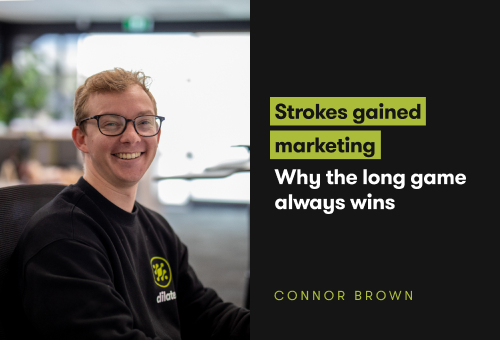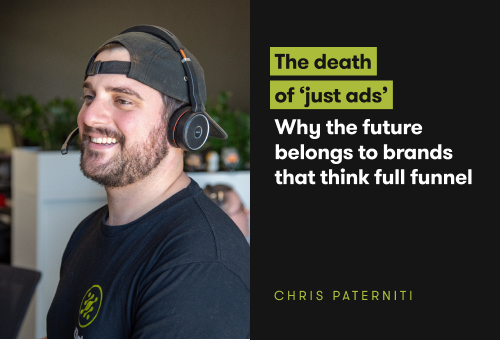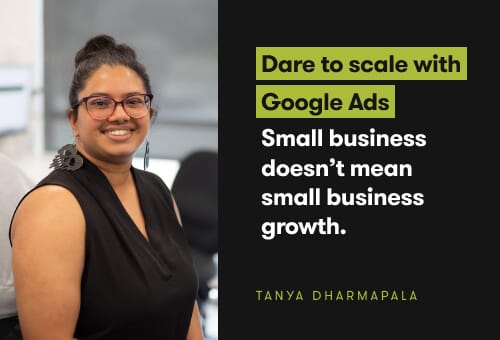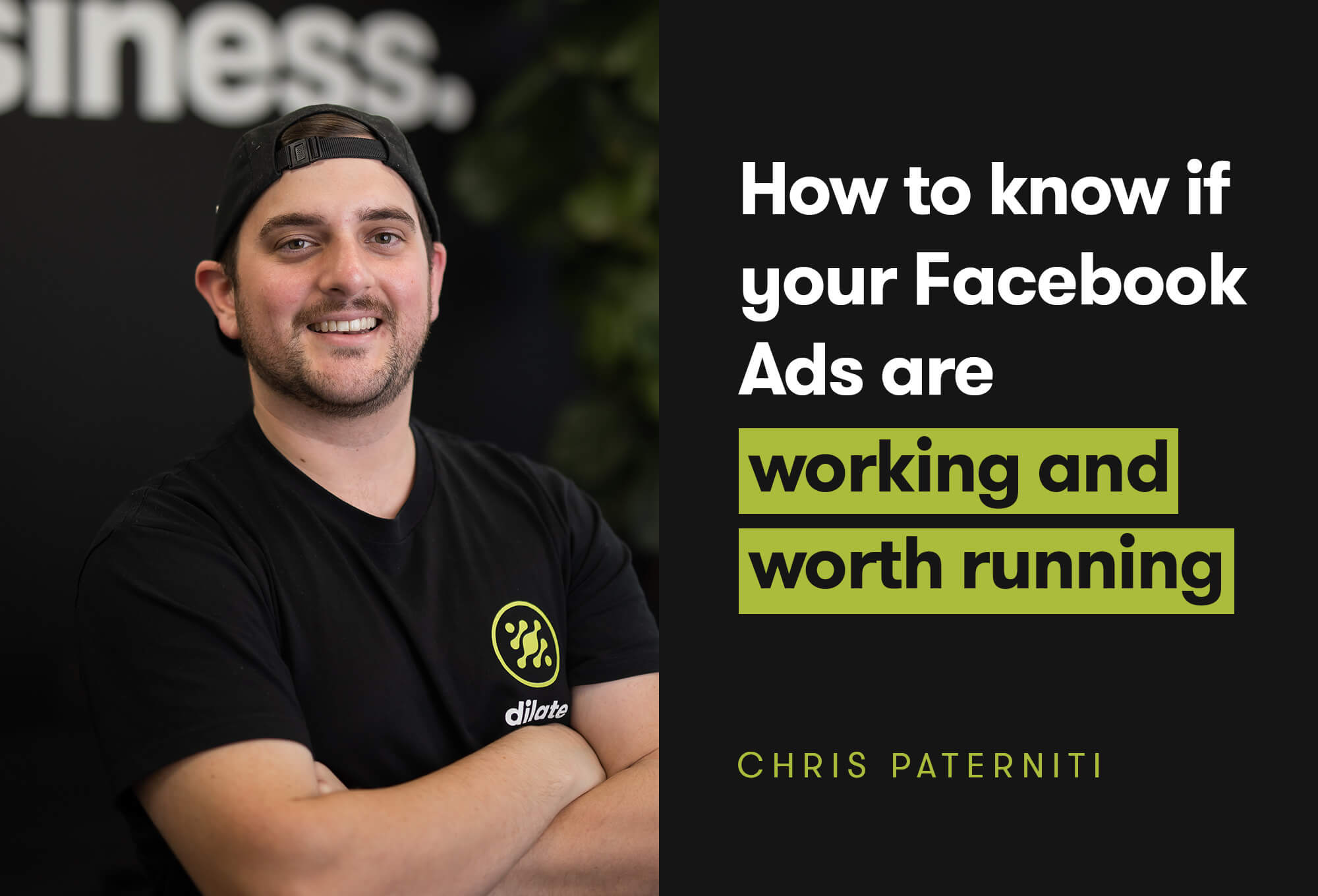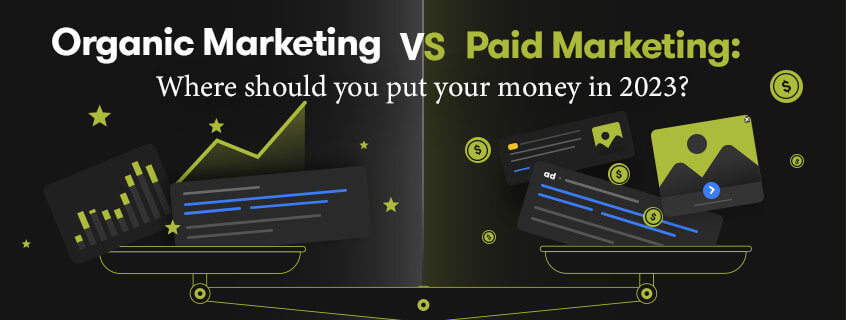
Organic VS Paid Marketing: Where to put your money in 2023?
The short answer? Invest in both.
It’s no secret that marketing is an essential function of any business. In today's digital era, it’s all about digital marketing. Why? Because digital marketing reaches a larger crowd, gives you more bang for your buck, and measures results more accurately. But with the increasing competition and digital noise, the question in all business owners and marketing managers arises:
Should you invest in organic or paid marketing?
The right choice depends on many factors such as the nature of your business, target audience, and marketing objectives.
We say to invest in both as the short answer. But as usual, there’s more to it. Let’s take a closer look at Organic Vs Paid Marketing and how you can use both in your next digital marketing strategy.
Organic Marketing
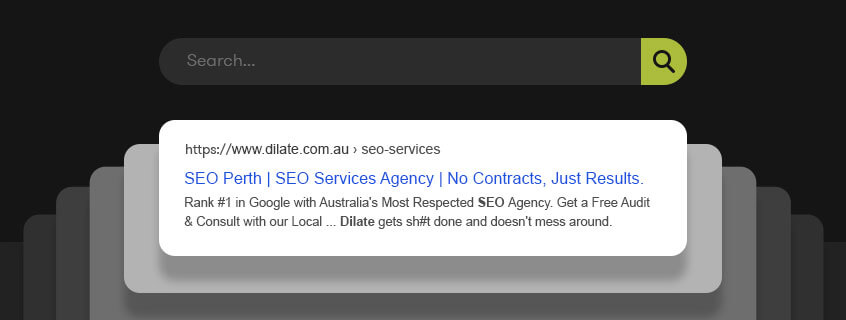
Organic marketing, unlike paid marketing, refers to the promotion of your business through free methods and channels. As the name suggests, organic marketing reaches customers through organic means like blog posts, content marketing on social media, influencer marketing, social media marketing and email marketing, to name a few.
Why you should use organic marketing
9 times out of 10, you’ll skip past, exit and ignore ads that come up on your search algorithms. Why? Because sometimes ads are interruptions that you’re not mentally in tune with, or you’re simply not at that stage in your purchasing journey.
If you skip past ads, chances are, your target audience does it too. There is much better value in potential customers finding your business organically through search engines or algorithms based on interest.
What else is there to love about organic marketing?
Cost-Effective: You won’t need to spend a heap of money if you’re creating your organic content from scratch. It’s all about creating quality content that is optimised for SEO (search engine optimisation).
Read our blog on 7 steps to optimise your content for SEO
Builds Trust and Credibility: By creating quality organic content, your audience would be more likely to trust you, and you’ll build authority on Google. Trust = Loyalty = Ranking on Google.
Read our blog on content tips: how to spot bad copy and learn from it
Long-Term Benefits: Organic marketing allows you to build long term relationships with customers. Like any relationship, building real connection takes time. But it’s worth it for the longevity of your brand.
The downside?
Organic marketing takes time and resources. Creating quality content, building brand awareness and showing real results takes consistency and patience. You also need to rely on audience behaviour and search algorithms to get any traction. But don’t forget, when it’s done right it generates valuable, long-term results.
Paid Marketing
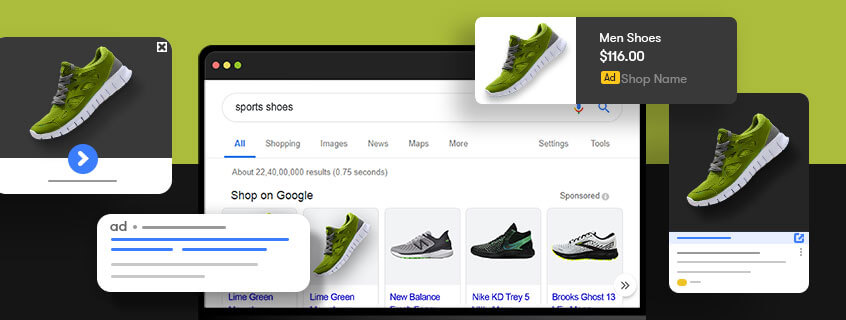
Paid marketing involves spending money on advertisements such as pay-per-click (PPC) on Google Ads, Facebook and social media platforms, sponsored posts and display advertising. Paid marketing is used to reach a large audience and drive traffic to your website fast.
Why you should use paid marketing
So you don’t have all the time in the world or enough (human and digital) resources to create organic content to generate organic traffic. You need new leads and quick results, and that’s fine. If you spend money in the right places, you’ll get a return on your investment fast.
What else can paid advertising do for your business?
Instant Results: Paid advertising provides quick results. You can reach your target audience almost immediately and start seeing results within a matter of days or weeks.
Targeting Control: Reach your target audience more accurately. You can choose your target audience and reach the right people based on demographics, interests and more. Using tools like Google Ads’ In-Market Audience and Facebook Custom Audiences and Targeting can help you to reach your perfect customer.
Flexibility: You can adjust your ads based on performance, track the performance of your ads and make decisions based on accurate data.
The downside?
Paid advertising is expensive as the cost per click can quickly add up, especially as the audience grows. You get temporary results based on seasonality of trends, and you’ll need to continuously invest in order to see consistent and regular results. But when you do it right, your ROAS (Return on Ad Spend) should be boosted enough for you to continue your ad spend on new ads.
Read our latest blog on Stop Wasting Your Advertising Spend And Do More With Less.
So where should you put your money?
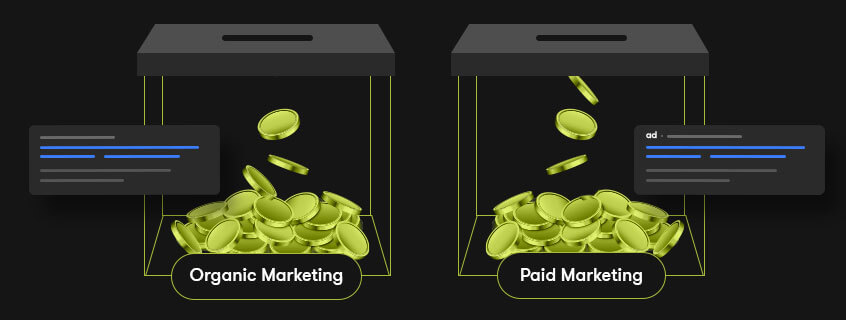
Deciding whether to invest in organic or paid marketing ultimately depends on the goals of your business. Neither is right or wrong and no one-size-fits-all. In fact, it is encouraged to invest in both! So how do you do this?
By organising your business goals into Short-Term Goals and Long-Term Goals.
Short-Term Goals
Short term goals might look like selling out seats or memberships, one off promotions, new product or service releases, expanding your market base, and anything else that requires immediate action.
The solution: Paid Marketing
Paid marketing will generate immediate results in the short-term. Of course, this will involve spending money, but when done right, it will boost ROAS.
Long-Term Goals
Long-Term Goals might look like growing your brand awareness, having status in an industry, building an authentic audience and loyal customer base, and appearing as an authority or leader.
The solution: Organic Marketing
Quality content builds authentic relationships which will benefit the long-term goals of your business. This will involve time investment and human resources, and when done right, will generate sustainable results for your business.
Integrating Organic and Paid Marketing
We said earlier that both organic and paid marketing can be a winning combination. You can leverage the strengths of both approaches for your digital marketing strategy. You can use paid marketing to drive instant traffic to your product or service, and then use organic marketing to build a trusted brand. So how do you successfully use both?
- Set clear goals and target audience: Ask yourself what you want to achieve and who you want to reach
- Allocate resources: Set a budget and think about the time you want to invest in each approach
- Measure results: Regularly track and analyse the performance of both your organic and paid campaigns and make data-driven decisions
Experiment and adjust: Don't be afraid to try new things, and create your campaigns based on what works best for your business.
The Verdict?
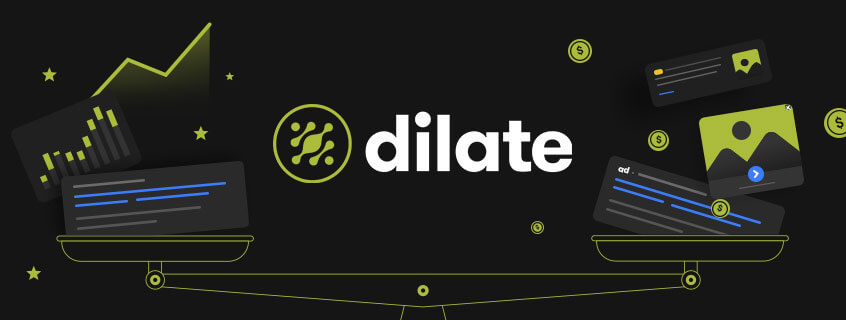
Both organic marketing and paid marketing allows you to reach new customers and gain some traffic - just at different speeds, and with different results.
We highly recommend doing both as part of your overall digital marketing strategy. But as usual, it’s down to the nature of your business, what it needs, what you can do with your marketing budget, and what you have patience for. If you’re unsure but you know you need to grow and start making a return on your investment, let’s talk!
We’re here to help you build your organic and paid digital marketing strategy so you can start smashing some serious ROI this 2023!


